The Capital planning project determines that there will be a special mechanism to speed up the progress of 14 urban railway lines, an increase of 4 lines compared to the previous plan.
On March 29, the Hanoi Capital Planning for the period 2021-2030, with a vision to 2050, was approved at a special session of the Hanoi People's Council. The planning aims to make Hanoi a "civilized, modern, green, smart city by 2023, converging the cultural quintessence of the country and the world , a place worth visiting and staying, worth living and contributing to".
According to Mr. Ha Minh Hai, Vice Chairman of Hanoi People's Committee, to achieve the above goal, the project identifies four development breakthroughs to remove "bottlenecks", including: Institutions and governance; infrastructure; development of high-quality human resources, science and technology and innovation; urban areas, environment and landscape.
Speeding up the progress of 14 urban railway lines
The planning project identifies a specific mechanism to speed up the progress of 14 urban railway lines, and early completion of routes connecting the inner city with Noi Bai International Airport and Hoa Lac High-Tech Park.
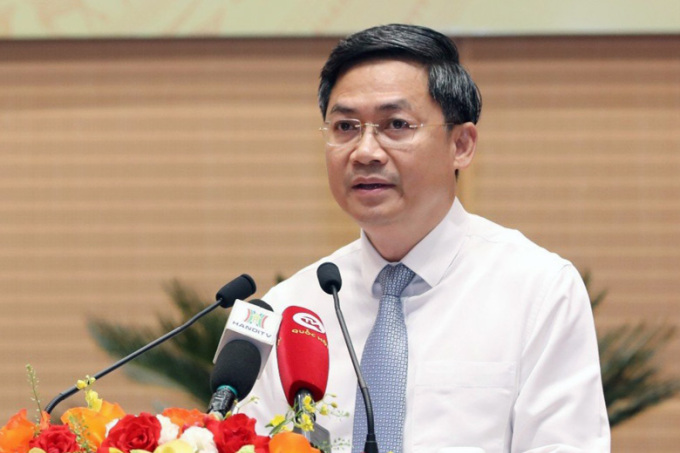
Mr. Ha Minh Hai, Vice Chairman of Hanoi People's Committee, reported at the meeting on March 29. Photo: Hoang Phong
In addition to continuing to deploy 10 urban railway routes according to the general planning for the capital construction until 2030 (plan 1259), the project adds 4 routes: Ngoc Hoi - Thuong Tin - Airport No. 2; Me Linh - Co Loa - Yen Vien - Duong Xa; Cat Linh - Le Van Luong - Ring Road 4 and Vinh Tuy - Minh Khai - Truong Chinh - Lang - Nhat Tan.
In addition, the city will build an elevated monorail running along both banks of the Red River, combining tourism, landscape and connecting the old quarter; at the same time, prepare conditions to coordinate with the Central Government to build a high-speed North-South railway line.
Regarding airports, along with upgrading and expanding Noi Bai International Airport, the project aims to reach 60 million passengers and 2 million tons of cargo per year by 2030; and 100 million passengers and 5 million tons of cargo per year by 2050.
In addition to Noi Bai International Airport, the second airport planned after 2030 is expected to be located in Phu Xuyen and Ung Hoa districts, welcoming 30-50 million passengers and one million tons of cargo each year. Gia Lam and Hoa Lac airports will be developed to serve both civil and military purposes.
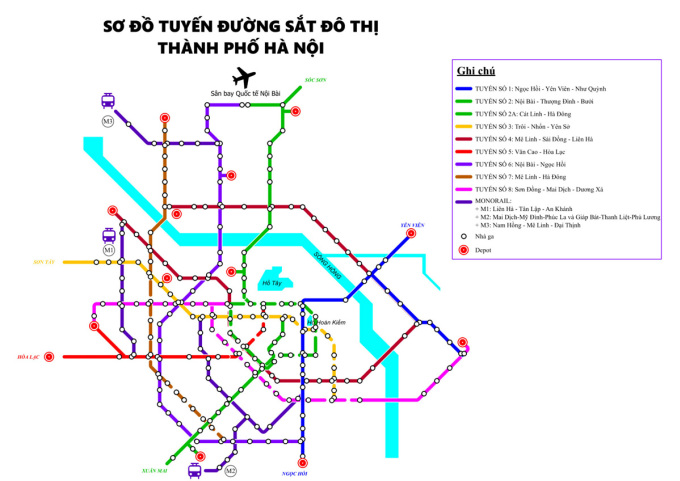
Hanoi urban railway route diagram according to the Transport planning to 2030. Source: Hanoi People's Committee
Along with infrastructure development, Hanoi will propose solutions for urban, environmental and landscape development. such as renovating, embellishing, and exploiting the old quarter and old streets to develop services, tourism industry, and culture; renovating the entire old apartment buildings and low-rise housing that are not developed according to planning to create a new civilized and modern urban area.
"Before 2035, complete the relocation of agency headquarters, schools, research institutes, and production facilities that do not comply with planning out of inner-city districts, creating land funds for the development of public spaces, culture, innovation, and supplementing the general school system," the project stated.
In addition, the city will revive inner-city rivers, strictly protect lakes and water surfaces, and exploit landscape advantages to create ecological space for the capital. Modern urban drainage and wastewater treatment systems will be built to fundamentally solve flooding and water pollution.
5 urban areas associated with 5 development driving axes
The project orients urban areas in association with development axes. Accordingly, the central urban area includes two sub-regions in the North and South of the Red River, which are existing districts and districts that will be formed in the future, playing a role in promoting the value of the historical inner city, harmoniously combining the trend of civilized and modern development.
The Western city includes the Hoa Lac - Xuan Mai area, oriented to develop into a science and training city. The Northern city includes Soc Son, Me Linh and part of Dong Anh, with industrial, high-tech functions and a logistics center connecting multimodal transport.
The Southern City was developed from the Southern urban area including Phu Xuyen and Ung Hoa when the second airport of the Capital region was formed. The Son Tay - Ba Vi urban area including Son Tay town and part of Ba Vi district is a cultural - tourist city.
Corresponding to the urban areas are 5 development axes. In which, the Red River is the main spatial axis of the central urban area with the characteristics of green trees, water, historical culture. The West Lake - Co Loa axis connects the historical urban heritage, with the landscape, famous places, cultural space of the West Lake and Co Loa areas.

Spatial organization orientation in the project. Source: Hanoi People's Committee
The Nhat Tan - Noi Bai axis creates economic momentum in the North of the Red River, is a smart, foreign axis, plays an important role in showing the image of the Capital and Vietnam to the world; attracts international organizations and large foreign corporations to set up headquarters and is the financial center in the North of the Capital.
West Lake - Ba Vi is a cultural heritage axis, connecting the inner city center with ancient villages, relics, and scenic spots around West Lake with the Xu Doai cultural region; developing cultural, historical and resort tourism; building cultural works that are symbols of Hanoi's era.
The Southern Linking Axis plays a role in connecting the central urban area with the southern region to promote the development of Phu Xuyen, Ung Hoa, and My Duc districts. This is also the axis connecting the central urban area with the second international airport; connecting the Thang Long - Hoa Lu heritage; connecting the capital with the southern provinces of the Red River Delta and the northern dynamic provinces of the Central Coast.
Previously, on February 23, the Provincial Planning Appraisal Council, with the Ministry of Planning and Investment as the standing agency, also approved the Hanoi Capital planning. After the City People's Council approves, the project will be completed and submitted to the Government for comments from the National Assembly before the Prime Minister signs the decision to issue it.
Vo Hai
Source link




![[Photo] More than 17,000 candidates participate in the 2025 SPT Competency Assessment Test of Hanoi National University of Education](https://vphoto.vietnam.vn/thumb/1200x675/vietnam/resource/IMAGE/2025/5/17/e538d9a1636c407cbb211b314e6303fd)
![[Photo] Readers line up to visit the photo exhibition and receive a special publication commemorating the 135th birthday of President Ho Chi Minh at Nhan Dan Newspaper](https://vphoto.vietnam.vn/thumb/1200x675/vietnam/resource/IMAGE/2025/5/17/85b3197fc6bd43e6a9ee4db15101005b)

![[Photo] Prime Minister Pham Minh Chinh chairs meeting on science and technology development](https://vphoto.vietnam.vn/thumb/1200x675/vietnam/resource/IMAGE/2025/5/17/ae80dd74c384439789b12013c738a045)


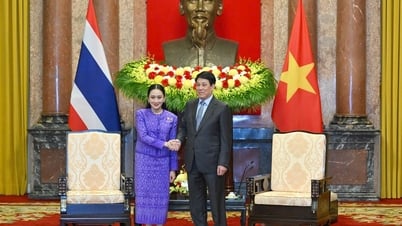


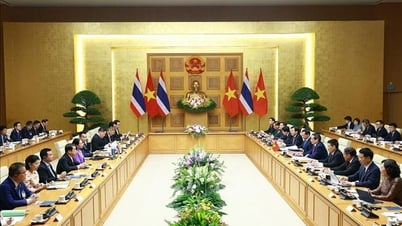

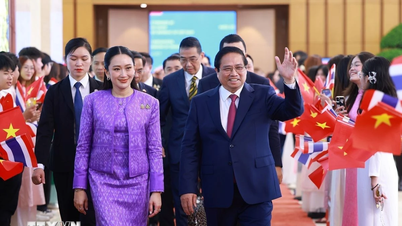

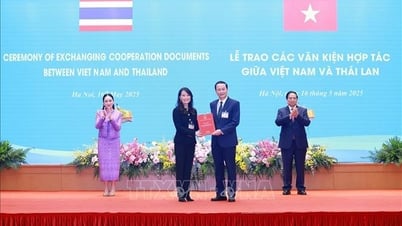










![[Photo] Nearly 3,000 students moved by stories about soldiers](https://vphoto.vietnam.vn/thumb/1200x675/vietnam/resource/IMAGE/2025/5/17/21da57c8241e42438b423eaa37215e0e)





















































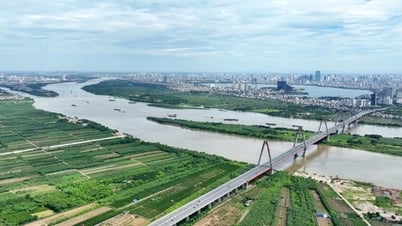
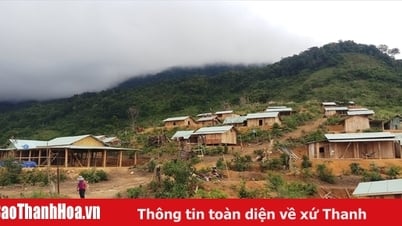


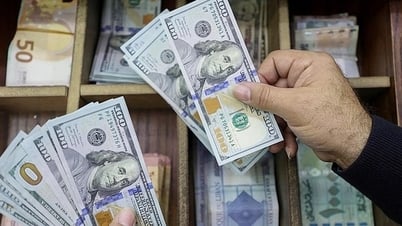

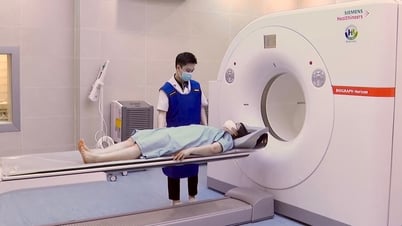










Comment (0)